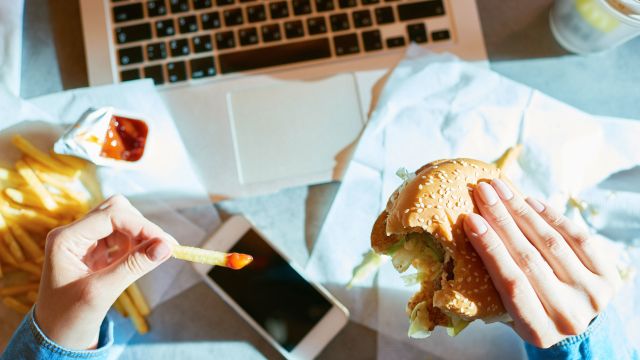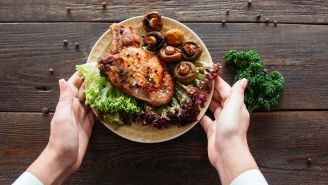When you see a perfectly photographed cake or a mac-and-cheese dish on social media, it can be hard not to stop and stare longingly. But for the sake of your health, you may want to scroll past.
Food porn, defined as appetizing food or cooking imagery, has long been used by advertisers. And if you frequently view these tempting images, that could have an unwanted effect on your weight.
According to research published in the journal Brain and Cognition, regularly viewing mouth-watering food photos on social media may trigger feelings of hunger and encourage overindulgence. The same review also suggests that the current obesity epidemic in the United States may be, in part, due to the abundance of such images people are viewing.
“That's exactly the point of advertising, to get people to buy those things and eat those things,” says Yevgeniy Gelfand, MD, an expert in psychiatry and internal medicine with Trident Medical Center in Charleston, South Carolina. “I think advertisers look for stimuli that get people interested and that's why these images exist.”
How delicious food imagery makes you hungry
There may be some validity to the saying, "You eat with your eyes first." In fact, one study published in the journal Physiology & Behavior found that the appearance of your meal—including the color, evenness and shape—actually influences the way you feel about the taste and smell.
There’s more: Another study found that looking at pictures of food was enough to raise a person’s levels of ghrelin, a hormone involved in the stimulation of hunger. Published in the journal Brain and Cognition, this study suggested viewing tasty images sends a rush of blood to the part of the brain responsible for taste, encouraging you to eat, even when you’re not hungry. This is known as visual hunger, or the desire to look at images of appealing eats followed by the desire for food that results from this viewing.
Gelfand believes there may be another aspect to this phenomenon: cravings. When you’re fixated on satisfying a craving, it won’t take much to push you toward the pantry. If you’re craving a salty, savory dish and a juicy steak appears on your screen, complete with vibrant colors and beautiful imagery, you’ll probably give into the craving, Gelfand says.
There are several reasons we may crave foods in the first place, including thirst, emotion, and habit. How do habits form? By repetition that is made stronger by the release of dopamine, a chemical that regulates pleasure. So, if every time you plop yourself in front of the computer screen, you find yourself reaching for something to munch on, you’ll likely find yourself in a pattern of eating while scrolling.
It’s almost like you see the images and think, wow, what a good idea, says Gelfand.
The other way social media influences your weight
Although delectable food images can increase your hunger and up your likelihood to overindulge, they may not be the only culprit in online-related weight gain. People who spend a lot of time on social media likely spend large amounts of time sitting while they scroll. Too much physical inactivity is associated with obesity as well as metabolic syndrome, a condition characterized by a group of factors that raise the risk for heart disease.
Gelfand believes the time spent sitting while scrolling through social media has much to do with potential excess weight gain. “Because you're sitting, you're not moving around, there's less walking, unless someone is really mindful about their exercise,” Gelfand says. “People tend to snack, I think, when they sit on social media, too.”
5 tips to avoid overindulging
You can make small changes to improve unhealthy eating habits.
- Follow pages that showcase healthy foods. In fact, some people use social media to hold themselves accountable for eating well, and one small study found that it worked!
- Make it a point to save healthy recipes and whip up one healthy meal each week.
- Limit your time viewing images of unhealthy foods.
- Make healthy choices to satisfy unhealthy cravings. Swap your favorite sandwich cookies for a handful of banana chips with a tablespoon of peanut butter, or pass up potato chips in favor of a handful of salt-and-vinegar almonds.
- Replace 30 minutes of screen time with another activity like reading or walking. These will keep your mind off eating and are conducive to a healthy lifestyle.






